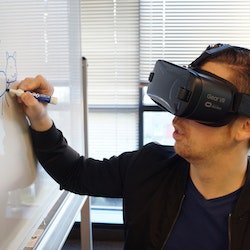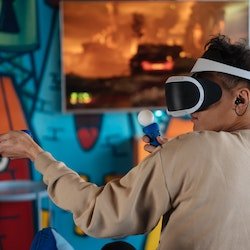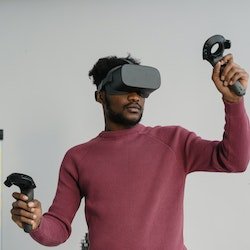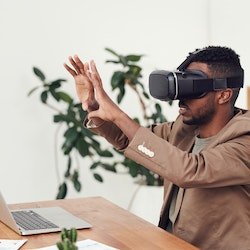Virtual Reality (VR) is becoming increasingly popular in the field of education, offering unique opportunities for immersive learning experiences that can engage and motivate students. In this blog post, we will explore some of the potential applications of VR in education and how it could shape the future of learning.
Field Trips
One of the most obvious applications of VR in education is the ability to take students on virtual field trips. With VR technology, students can visit historical landmarks, explore distant planets, or even dive into the depths of the ocean, all without leaving the classroom. These experiences can provide a more engaging and memorable way for students to learn about different subjects.
Interactive Learning
VR can also be used to create interactive learning experiences that can help students better understand complex concepts. For example, students can interact with 3D models of molecules, explore mathematical concepts in a virtual environment, or even practice surgical procedures on virtual patients. These experiences can help to improve student engagement and retention.
Language Learning
VR can also be used to facilitate language learning by immersing students in a virtual environment where they can practice speaking and listening in real-world scenarios. This can be especially beneficial for students who may not have access to native speakers or real-life immersion experiences.
Personalized Learning
VR can also be used to personalize learning experiences, catering to each student’s individual needs and preferences. For example, students can learn at their own pace, choose their own learning path, and receive immediate feedback on their progress. This can help to improve student motivation and achievement.
Collaboration and Social Learning
Finally, VR can be used to facilitate collaboration and social learning, allowing students to work together on projects and learn from each other in a virtual environment. This can help to develop important social skills and foster a sense of community and belonging.
In conclusion, the future of VR in education is bright, with numerous potential applications that can transform the way we learn and teach. By providing immersive and engaging learning experiences, VR can help to improve student motivation, engagement, and achievement, as well as facilitate personalized and collaborative learning. As the technology continues to evolve and become more accessible, we can expect to see even more exciting use cases for VR in education.





Leave a Reply